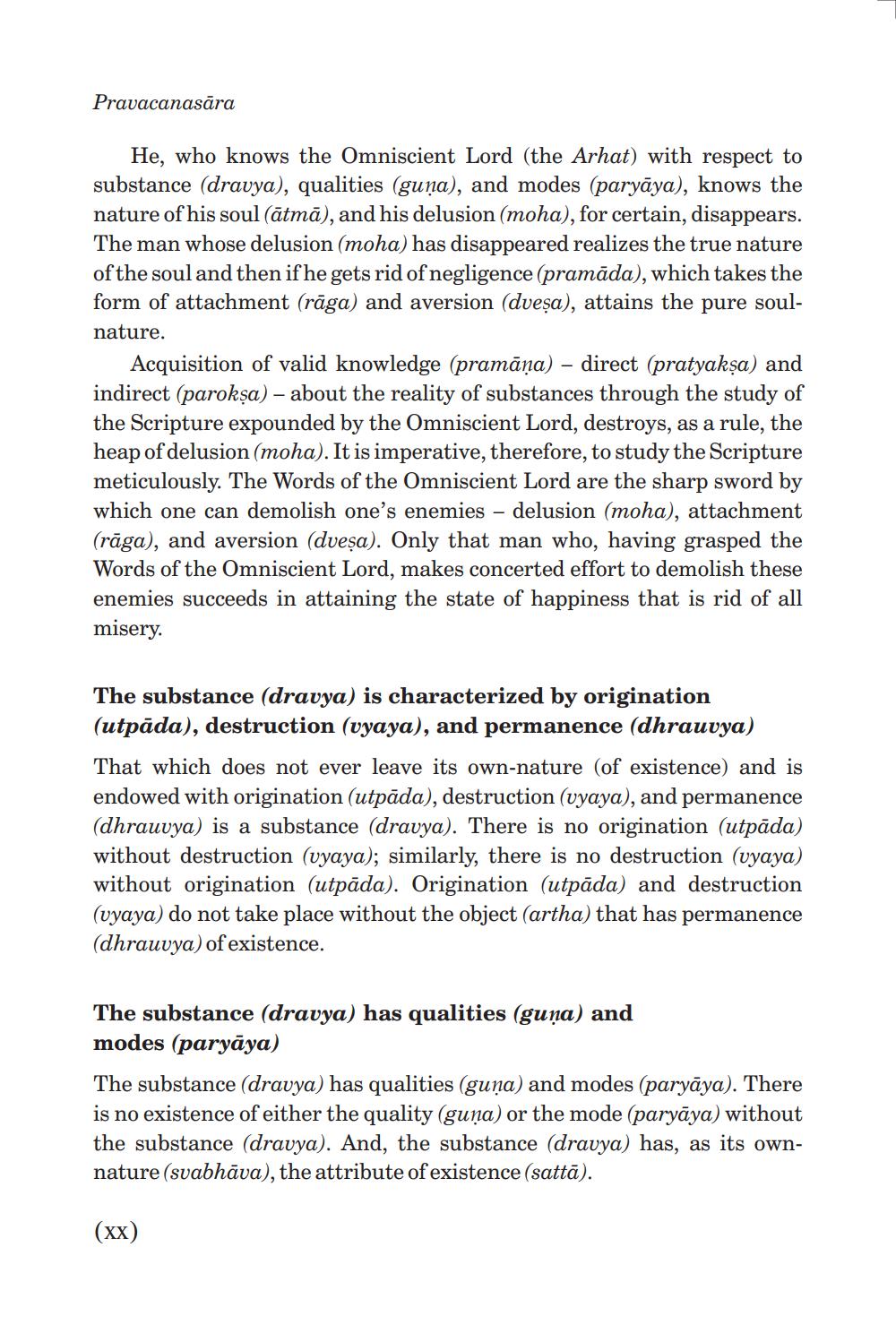________________
Pravacanasara
He, who knows the Omniscient Lord (the Arhat) with respect to substance (dravya), qualities (guna), and modes (paryaya), knows the nature of his soul (ātmā), and his delusion (moha), for certain, disappears. The man whose delusion (moha) has disappeared realizes the true nature of the soul and then if he gets rid of negligence (pramada), which takes the form of attachment (rāga) and aversion (duesa), attains the pure soulnature.
Acquisition of valid knowledge (pramāņa) - direct (pratyakṣa) and indirect (paroksa) - about the reality of substances through the study of the Scripture expounded by the Omniscient Lord, destroys, as a rule, the heap of delusion (moha). It is imperative, therefore, to study the Scripture meticulously. The Words of the Omniscient Lord are the sharp sword by which one can demolish one's enemies delusion (moha), attachment (rāga), and aversion (dveṣa). Only that man who, having grasped the Words of the Omniscient Lord, makes concerted effort to demolish these enemies succeeds in attaining the state of happiness that is rid of all misery.
-
The substance (dravya) is characterized by origination (utpăda), destruction (vyaya), and permanence (dhrauvya)
That which does not ever leave its own-nature (of existence) and is endowed with origination (utpāda), destruction (vyaya), and permanence (dhrauvya) is a substance (dravya). There is no origination (utpāda) without destruction (vyaya); similarly, there is no destruction (vyaya) without origination (utpāda). Origination (utpāda) and destruction (vyaya) do not take place without the object (artha) that has permanence (dhrauvya) of existence.
The substance (dravya) has qualities (guna) and
modes (paryāya)
The substance (dravya) has qualities (guna) and modes (paryaya). There is no existence of either the quality (guna) or the mode (paryaya) without the substance (dravya). And, the substance (dravya) has, as its ownnature (svabhāva), the attribute of existence (sattā).
(xx)




